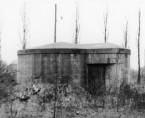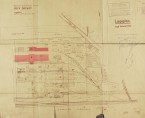Gleiwitz II
A sub-camp created at the Deutsche Gasrusswerke GmbH lampblack factory. Formally, it came into being in May 1944 when the Auschwitz commandant’s office took over a compulsory labor camp for Jews. At first, it held about 250 women and 260 men. By winter the combined population was over a thousand, 700 of whom were men.
The prisoners were billeted in seven wooden barracks, three of which were fenced off for women, and the other four for men. Barbed wire fencing, with six guard towers, surrounded the camp. The directors were, in turn, SS-Oberscharführers Becker and Konrad Friedrichsen, and SS-Hauptscharführer Bernhard Rackers. They had an SS detachment of 70 at their disposal.
The male prisoners labored at expanding the factory and repairing machinery. Some were employed at the nearby Borsig Koks-Werke. The women worked mostly at the lampblack generators, in dense fumes of various oils at high temperature. They also had to carry away the boiling waste products in buckets and dump them into a special vat, an operation that frequently resulted in severe burns. Other women packed the grimy lampblack, which stuck to the skin and was hard to wash off, into sacks as it poured out of the factory hall from pipes.
In January 1945, the prisoners were led out on the evacuation trail, but after marching about 20 km it was learned that Red Army units were near, so they had to march back to Gliwice. From there the men were taken by rail to Sachsenhausen and the women to Ravensbrück.

